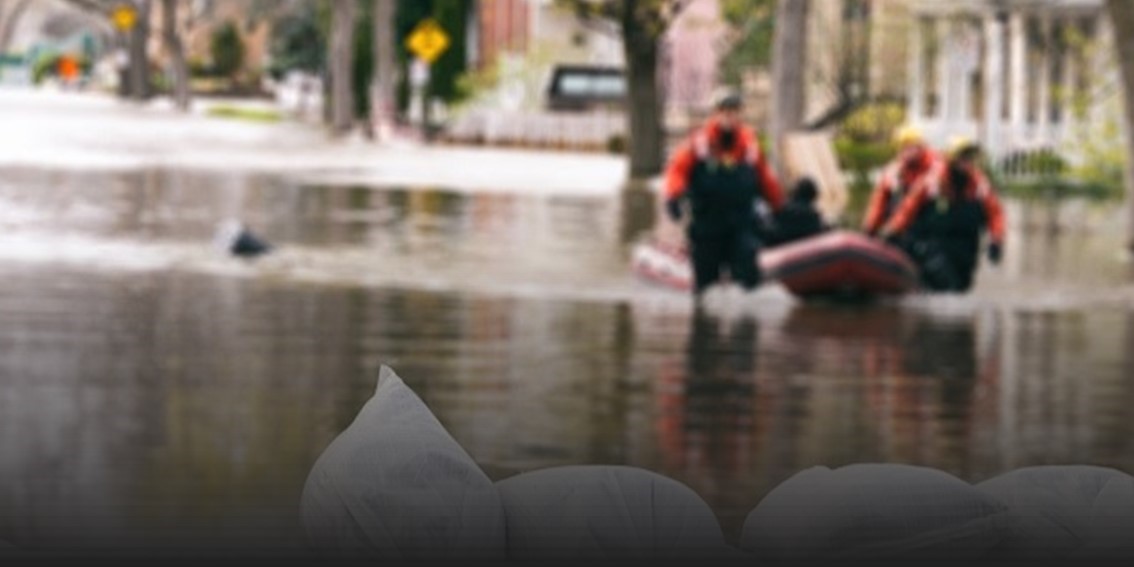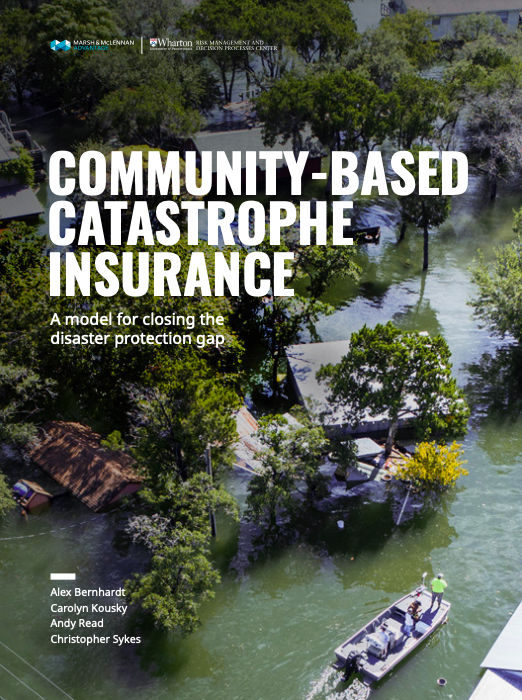Introduction
Insurance plays a critical role in the recovery from disasters, but many households and small businesses do not have sufficient savings to fund repair and rebuilding on their own (Bhutta and Dettling 2018). Disaster aid can be insufficient and delayed, leaving victims struggling and with uncertain prospects. Credit can be difficult to access or burdensome for some families. As such, insurance is a vital source of adequate and immediate recovery funds, yet many remain uninsured against disasters — referred to as the protection gap. The impacts of the disaster protection gap can cascade; having the financial resources to repair and rebuild is linked to many aspects of well-being, since the stress of recovery is lessened and funds do not need to be diverted from other essential spending (e.g., McKnigh 2019). Further, as more properties in a community are insured, overall community recovery improves and helps to reestablish the local economy.
Despite the importance of insurance, many households and businesses at risk from disasters around the world are uninsured. According to catastrophe modeler AIR, only about 25 percent of economic losses from natural catastrophes are insured globally, and the uninsured portion could potentially exceed $US one trillion in a particularly bad year (AIR 2019). Here in the US, where standard property coverage often excludes certain natural disaster perils, many households and small businesses are left without adequate coverage. In California, only slightly more than 10 percent of homeowners have earthquake insurance (Maffei 2019). In Missouri, the state with the third-largest market for earthquake insurance, the take-up rate, or the percentage of properties that are insured, has declined to below 14 percent in 2018 — down from over 60 percent in 2000 (Missouri Department of Insurance 2019). Take-up rates for flood insurance inside the 100-year floodplain are on average slightly over 30 percent around the country, but with wide geographic variation (Kousky et al. 2018). In addition to low insurance uptake among households, many small businesses do not have adequate insurance coverage against disasters (Collier et al. 2019).
There are myriad reasons for a persistent disaster protection gap in the United States. Those at risk may not be informed about the hazards they face or potential damages. They may have poor financial literacy or not understand the role of disaster insurance in recovery. A large body of research has demonstrated that in situations of risk, people may be prone to many biases in their decision-making that could discourage them from taking proactive risk management measures, including the purchase of insurance (Meyer and Kunreuther 2017). The cost of disaster insurance coverage can either discourage voluntary purchase or be a fundamental barrier for those without sufficient means to pay. Concerns about concentration of risk, adverse selection, and regulatory constraints can impede greater offering of disaster cover from private insurers. These and other factors combine to make attempts at closing the disaster insurance gap an ongoing challenge.
New models of catastrophe insurance delivery need to be considered that could secure widespread coverage for catastrophes and help sustain communities following a catastrophic event. One such approach is community-based catastrophe insurance (CBCI). In a CBCI program, a community — loosely defined as any community organization, special-purpose district, or public entity — arranges insurance protection on behalf of its members or to the benefit of its members. By securing coverage for a group of properties, CBCI has the potential to help close the disaster protection gap, improving financial recovery for communities. CBCI could also be designed to provide more affordable disaster insurance coverage and could be linked directly to financing approaches for community-level hazard mitigation.
This report is based on a series of interviews with a range of stakeholders, including various community members, regulators, reinsurers, and risk managers. These interviews explored the concept of CBCI and the opportunities and constraints around implementation of a community policy. Interviewees’ comments contributed to the conceptual development of potential delivery models and to the design of a roadmap to implementation. All the interviewees are listed in Appendix 1. This paper also builds on two earlier investigations of the concept of community-based insurance for floods specifically (Kousky and Shabman 2015; National Research Council 2015).
The focus of this report is on addressing the questions of a wide range of stakeholders, including community officials, members of the insurance industry, and others interested in efforts to promote resilience through risk transfer. The report offers an in-depth introduction to the delivery models so that community officials and risk managers can begin to explore and implement CBCI as part of an integrated risk management strategy. Although the report’s focus is on the United States, the models are broad and could be extended to many other regulatory contexts.
The next section of this report provides an overview of the CBCI concept, the potential benefits it could offer communities, and preconditions for its application. Section 3 outlines four delivery models for CBCI: a facilitator model, a group policy model, an aggregator model, and a community captive model, each of which requires increasing levels of community commitment and involvement. Section 4 provides a five-part framework for implementation to guide any community interested in piloting CBCI. Section 5 concludes the report.

